Copyright 2016 by Gary L. Pullman
Feuds don't always end in death, and many involve words rather than weapons. Often, feuds produce animosity and emotional trauma. Sometimes, they destroy personal or professional reputations. Occasionally, they put an end to a person's career.
No
one seems immune to the feelings that ignite feuds, and such
conflicts have involved writers, a philosopher, artists, inventors,
psychoanalysts, patriots, scientists, and sharpshooters. One involved
even a former U. S. secretary of state and a sitting vice-president.
Hopefully,
we'll never become involved in extended hostilities such as those in
which the individuals of these 10 famous feuds participated.
10 Hans Christian Andersen vs. Charles Dickens
10 Hans Christian Andersen vs. Charles Dickens
Both
Hans Christian Andersen (1805-1875) and Charles Dickens (1812-1870)
greatly admired one another's work. They met during Andersen's 1847
tour of England, and a 10-year period of “friendly correspondence”
ensued. When the Danish author again visited England, he stayed as a
guest in Dickens' home, Gads Hill Place. His visit was supposed to
last two weeks but stretched, instead, to five, disrupting the
Dickens' household and vexing the English author's children. Subtle
hints that it was time to end his visit went unnoticed.
After Andersen finally departed, Dickens wrote a note on the guestroom mirror: “Hans Andersen slept in this room for five weeks—which seemed to the family AGES!” Andersen, who'd “thoroughly enjoyed” his stay, was confused when Dickens broke off their correspondence. Some contend Dickens, as an act of revenge, modeled “the bony bore” Uriah Heep of his novel David Copperfield on Andersen.
After Andersen finally departed, Dickens wrote a note on the guestroom mirror: “Hans Andersen slept in this room for five weeks—which seemed to the family AGES!” Andersen, who'd “thoroughly enjoyed” his stay, was confused when Dickens broke off their correspondence. Some contend Dickens, as an act of revenge, modeled “the bony bore” Uriah Heep of his novel David Copperfield on Andersen.
9 Hans Christian Andersen vs. Søren Kierkegaard
Hypersensitive
to criticism concerning his work, Andersen often “retaliated” by
writing caricatures of his critics. In 1838, when Danish philosopher
Søren Kierkegaard wrote an unsympathetic review of Andersen's only
novel, Only a Fiddler (1837), Kierkegaard ignited a feud with
his fellow Dane. Describing the novel as uneven and unoriginal and as
failing to separate the author from his characters, Kierkegaard's
generally negative review suggested the fiddler's grievance with life
represented Andersen's own “dissatisfaction with the world” and
his reluctance to struggle in life.
In “The Snail and the Rose-bush” (1863), Andersen may have retaliated by depicting the rather reclusive Kierkegaard as a snail—and a female one, at that—who comes out of her shell only once a year to question a rose-bush (Andersen) about why it flowers (creates art), before retreating again into her solitude. The snail, Andersen's narrator says, “had much within her, she had herself” and regarded the world as “nothing.”
In “The Snail and the Rose-bush” (1863), Andersen may have retaliated by depicting the rather reclusive Kierkegaard as a snail—and a female one, at that—who comes out of her shell only once a year to question a rose-bush (Andersen) about why it flowers (creates art), before retreating again into her solitude. The snail, Andersen's narrator says, “had much within her, she had herself” and regarded the world as “nothing.”
8 Leonardo da Vinci vs. Michelangelo di Lodovico Buonarroti Simoni
Both
celebrated artists even in their own day, Leonardo da Vinci
(1452-1519) and Michelangelo di Lodovico Buonarroti Simoni
(1475-1564) were rivals whose feud seemed to be inspired by mutual
jealousy. Michelangelo publicly insulted Leonardo, “shocking
bystanders when he sneered at the older genius for never finishing
his statue of a horse in Milan.” Attending a meeting to decide
where Michelangelo's statue of David
should stand, the older artist suggested the genitals of
Michelangelo's sculpture should be covered, his comment suggesting “a
symbolic castration of his rival.
7 Thomas Edison vs. Nikola Tesla
7 Thomas Edison vs. Nikola Tesla
NikolaTesla (1856-1943) hoped to impress Thomas Edison (1847-1931) with his
work on alternating current (AC), but Edison, committed to his own
work on direct current (DC), brushed him off. Thereafter, Tesla sold
his patents to Edison's rival, George Westinghouse (1846-1914), for
whom Tesla went to work. Westinghouse was already working on AC at
the time, but Tesla “helped to improve upon the process and the
product.” A highlight in the feud between Tesla and Edison occurred
with the so-called War of the Currents, which Tesla and Westinghouse
won.
6 Thomas Edison vs. George Westinghouse
6 Thomas Edison vs. George Westinghouse
Westinghouse
had the financial clout needed to take on Edison, and, in him, Edison
recognized a threat, as Westinghouse Electric “began
installing its own AC generators around the country, focusing mostly
on the less populated areas that Edison’s system could not reach”
while, at the same time, the company undercut the fees Edison charged
his urban customers for electricity.
Edison
believed AC was “dangerous.” To demonstrate its lethal effects,
Edison began electrocuting dogs, claiming AC would kill a human being
just as quickly. Later, he also electrocuted “several calves and a
horse,” and, when Harold Brown (1857-1944), an electrical engineer
and electricity salesman, was commissioned to build an electric chair, Edison bribed him to use AC. William Kemmler's (1860-1890)
execution was botched, and the murderer died horribly, his face
“contorted,” a palm bloody from his clenched fist, and his coat
on fire. Witnesses were horrified, and Westinghouse feared losing
millions if Edison convinced people AC was deadly.
Edison
next arranged to electrocute an elephant, Topsy, who'd been
determined to represent a danger to people. The execution took place
at Coney Island and featured the use of AC. Despite Edison's efforts
to convince the public that DC was safer than AC, Westinghouse won a
contract to illuminate the World's Fair and received “all the
positive publicity he would need to make alternating current the
industry standard.”
5 Sigmund Freud vs. Carl Jung
5 Sigmund Freud vs. Carl Jung
Psychoanalysis'
founder, Sigmund Freud (1856-1939), and Carl Jung (1875-1961), who
originated analytical psychology, differed in their views about the
nature of the unconscious. Their differences fueled a feud marked by
“charges and counter-charges. Freud fainted several
times while in Jung's presence. Freud says Jung harbored death wishes
towards him; Jung laughed the idea off.” Supposedly, both men also
recognized the development of homosexual feelings for one another,
which may have facilitated their parting of ways.
4 Alexander Hamilton vs. Aaron Burr
4 Alexander Hamilton vs. Aaron Burr
The
longstanding feud between former U. S. Secretary of the Treasury
Alexander Hamilton (1757-1804) and Vice-President Aaron Burr
(1756-1836) ended in an illegal duel on July 11, 1804, in which
Hamilton was killed. They had several political rivalries, but their
feud climaxed with “the New York governor's race in 1804.” Burr,
until then a Republican, ran as an independent candidate. Hamilton
encouraged New York Federalists “not to support Burr,” and Burr
lost the election. “A relative slight” gave Burr the excuse he
needed, and he challenged Hamilton to a duel. Each man fired his
pistol. Burr remained unharmed, but Hamilton suffered a mortal wound,
dying the following day. Although Burr survived the duel, his career
as a politician was a casualty of the affair, and he never held
“elective office again.”
3 Patrick Henry vs. Thomas Jefferson
3 Patrick Henry vs. Thomas Jefferson
Patriot
Patrick Henry (1736-1799) and Thomas Jefferson (1743-1826) became
embroiled in a protracted feud when Jefferson believed “that Henry
was critical of his performance as Governor during the Civil War.”
Although,
when “he was elected to the Virginia House of Burgesses in 1768,”
Jefferson “joined its radical bloc, led by Patrick Henry and George
Washington,” Jefferson's later two years as Virginia's governor
marked “the low point” of Jefferson's political career,” as
“torn between the Continental Army's desperate pleas for more men
and supplies and Virginians' strong desire to keep such resources for
their own defense, Jefferson waffled and pleased no one.” In
addition, to protect his state's capital from the British army, he
moved it from Williamsburg to Richmond, “only to be forced to
evacuate that city when it, rather than Williamsburg, turned out to
be the target of British attack.” He further humiliated himself
when, the day before his second gubernatorial term, he “was forced
to flee his home at Monticello” to evade “the British cavalry,
thereby incurring the label of coward. Henry's criticism of his term
in office offended Jefferson, and the two men feuded thereafter.
2 Thomas Henry Huxley vs. Richard Owen
2 Thomas Henry Huxley vs. Richard Owen
English
Victorian anatomist and paleontologist Richard Owen (1804-1892), the
assistant curator of the Royal College of Surgeons' Hunterian
Collections, refused to accept Charles Darwin's (1809-1882) theory of
evolution. Instead, he held that each species is derived from the
same archetypal “blueprint” created by God. Owen's views brought
him into conflict with Darwin's “bulldog,” Thomas Henry Huxley(1825-1895), resulting in a feud between the men that lasted
throughout their respective careers. Their debate as to whether the
brains of apes and men were more similar (Huxley's view) or
dissimilar (Owen's position) reached its climax when Huxley
“conclusively demonstrated that the hippocamus minor, a small fold
at the back of the brain,” was not “unique to man,” as Owen
insisted, “but also was to be found in the brains of apes.” The
British public, which followed the claims of the rivals with great
interest, judged Huxley to have won their long-standing feud.
Nevertheless, Owen's distinguished career continued until he retired
at age 79.
1 Annie Oakley vs. Lillian Smith
1 Annie Oakley vs. Lillian Smith
Buffalo
Bill's Wild West Show wasn't big enough for both Annie Oakley
(1860-1926) and Lillian Smith (1871-1930). Oakley, called “Little
Sure Shot,” and Smith, dubbed “the California Huntress,” were
both expert shots, but Oakley was regarded as “demure, feminine and
reserved, while Smith was seen as flirtatious, brash and boastful.”
Newspaper accounts of their exploits played up the differences in
their personalities and in their respective ages: Oakley was 11 years
Smith's senior, but Oakley insisted she was 6 years younger than her
actual age. Smith suggested her rival's celebrity was fading. Unlike
Oakley, Smith also received the benefit of the doubt when the same
behavior by both of them was called into question. While touring
England, Oakley scandalized the nation when she shook hands with
“Prince Edward's first wife,” but Smith, who did likewise,
received no reprimand. Buffalo Bill Cody also flamed the fires of
their feud by praising Smith's skills “while downplaying Oakley's
achievements.” Finally, Oakley left the show. Ultimately, though,
Oakley's fame continued, whereas Smith's career ended in obscurity.
(LINK 15)
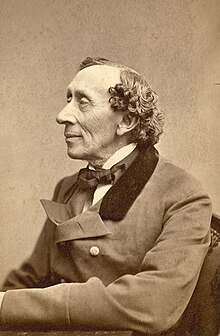
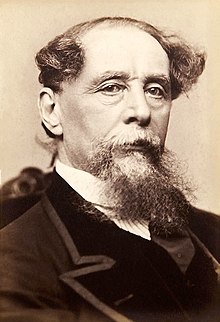


.jpg/220px-Miguel_%C3%81ngel%2C_por_Daniele_da_Volterra_(detalle).jpg)
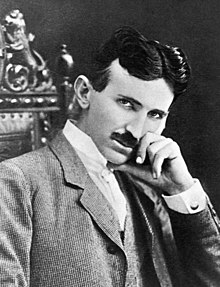
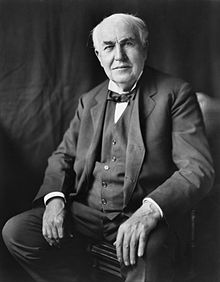
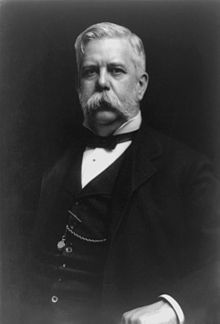
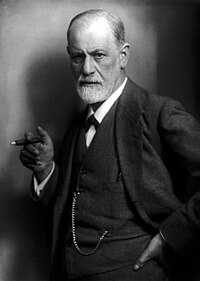
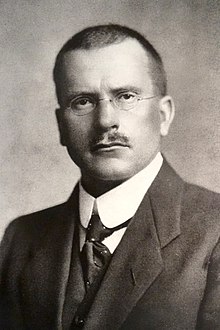
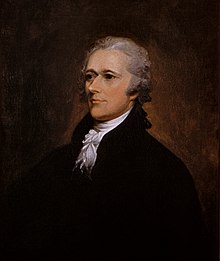
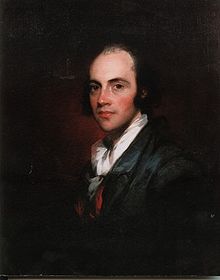
.jpg/220px-Official_Presidential_portrait_of_Thomas_Jefferson_(by_Rembrandt_Peale%2C_1800).jpg)
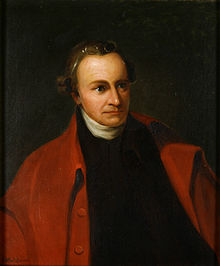
.jpg/220px-T.H.Huxley(Woodburytype).jpg)



No comments:
Post a Comment